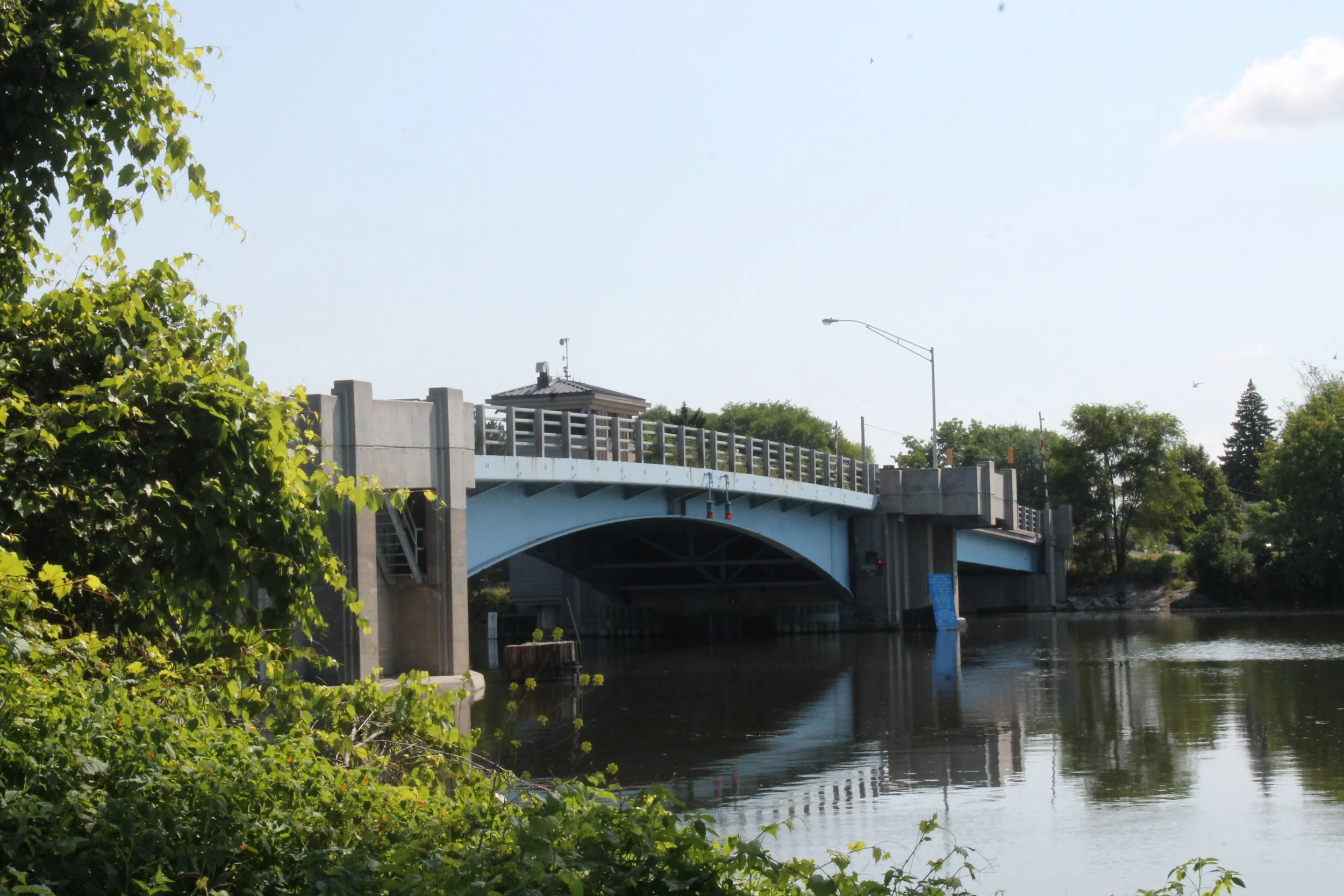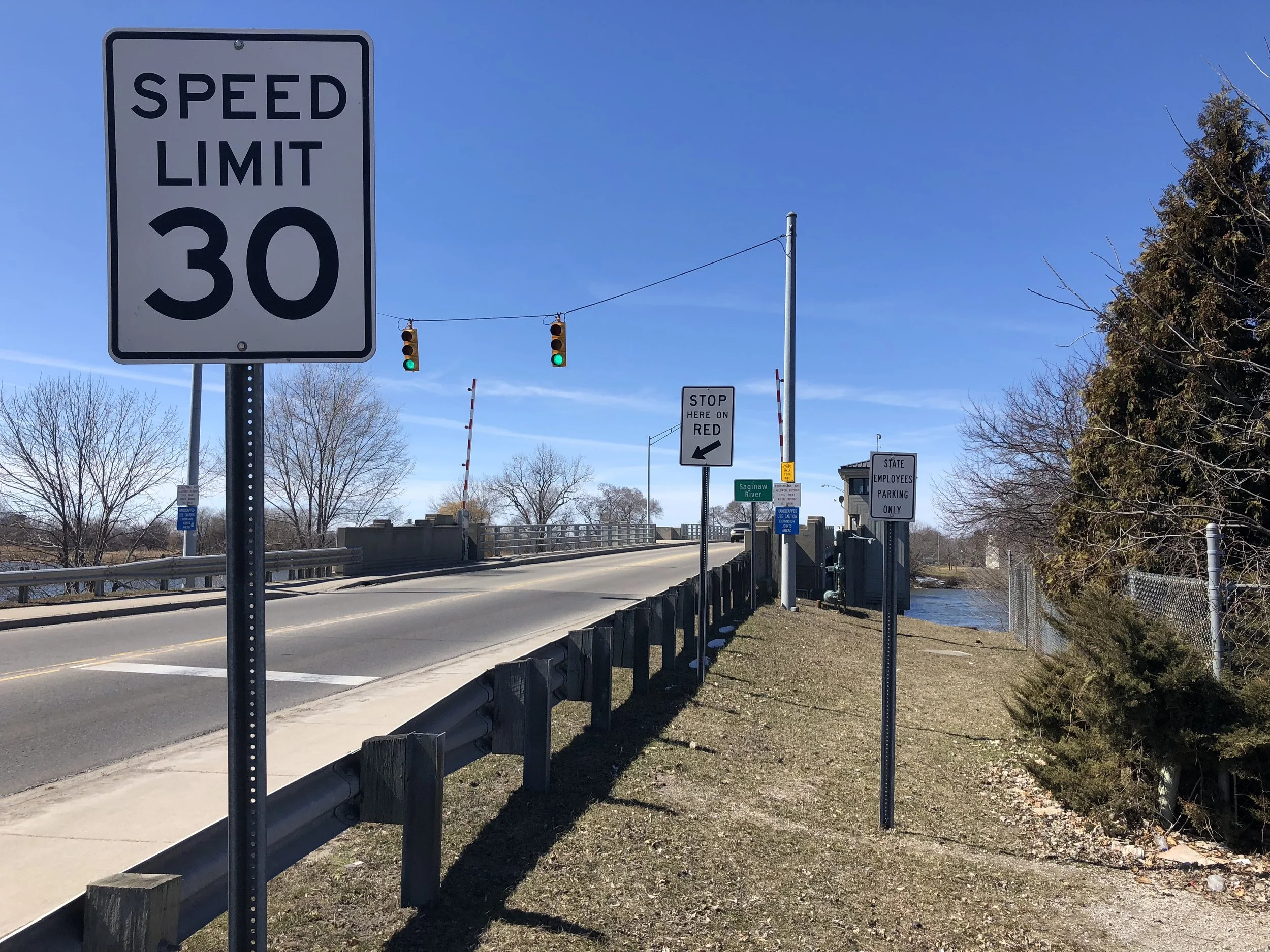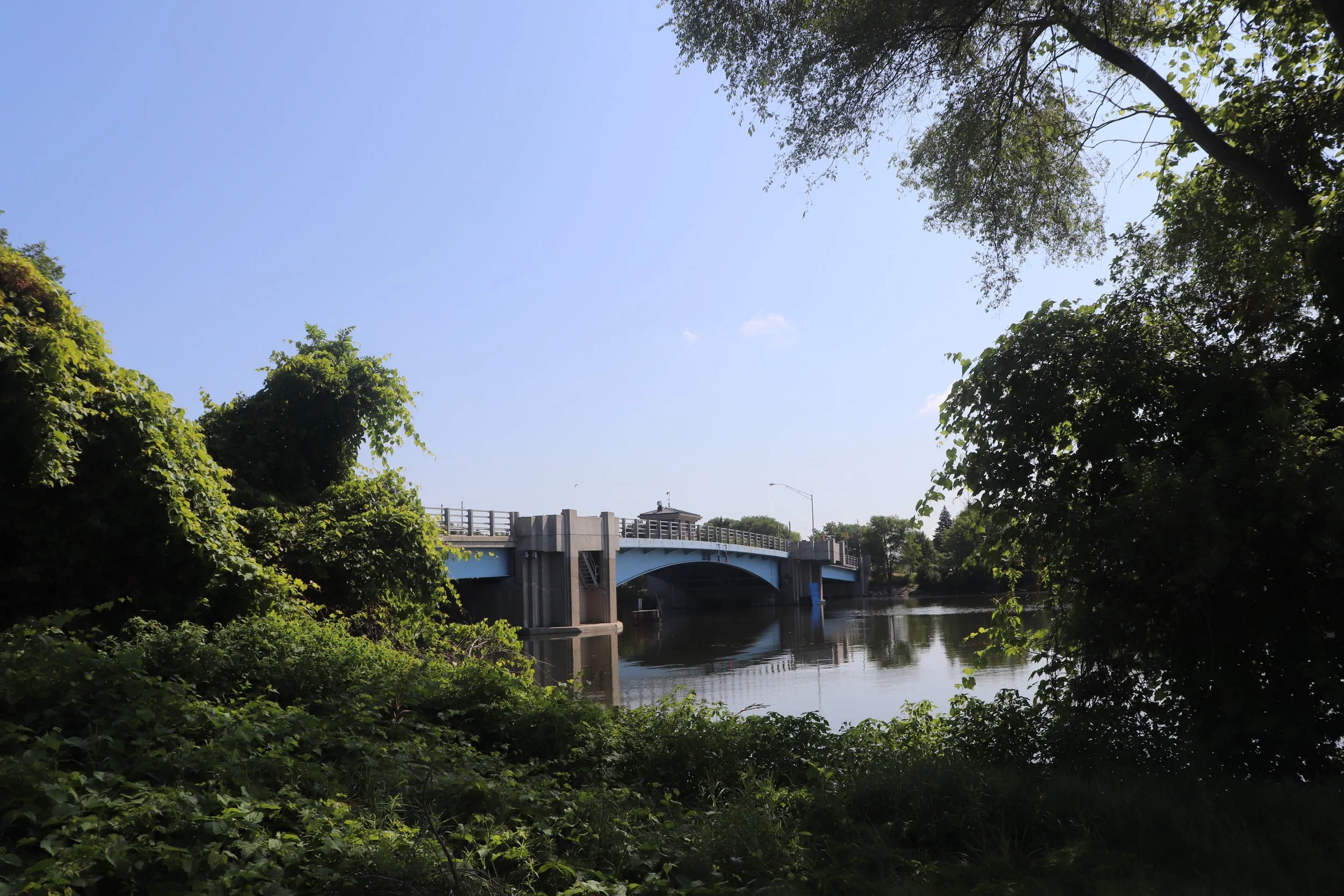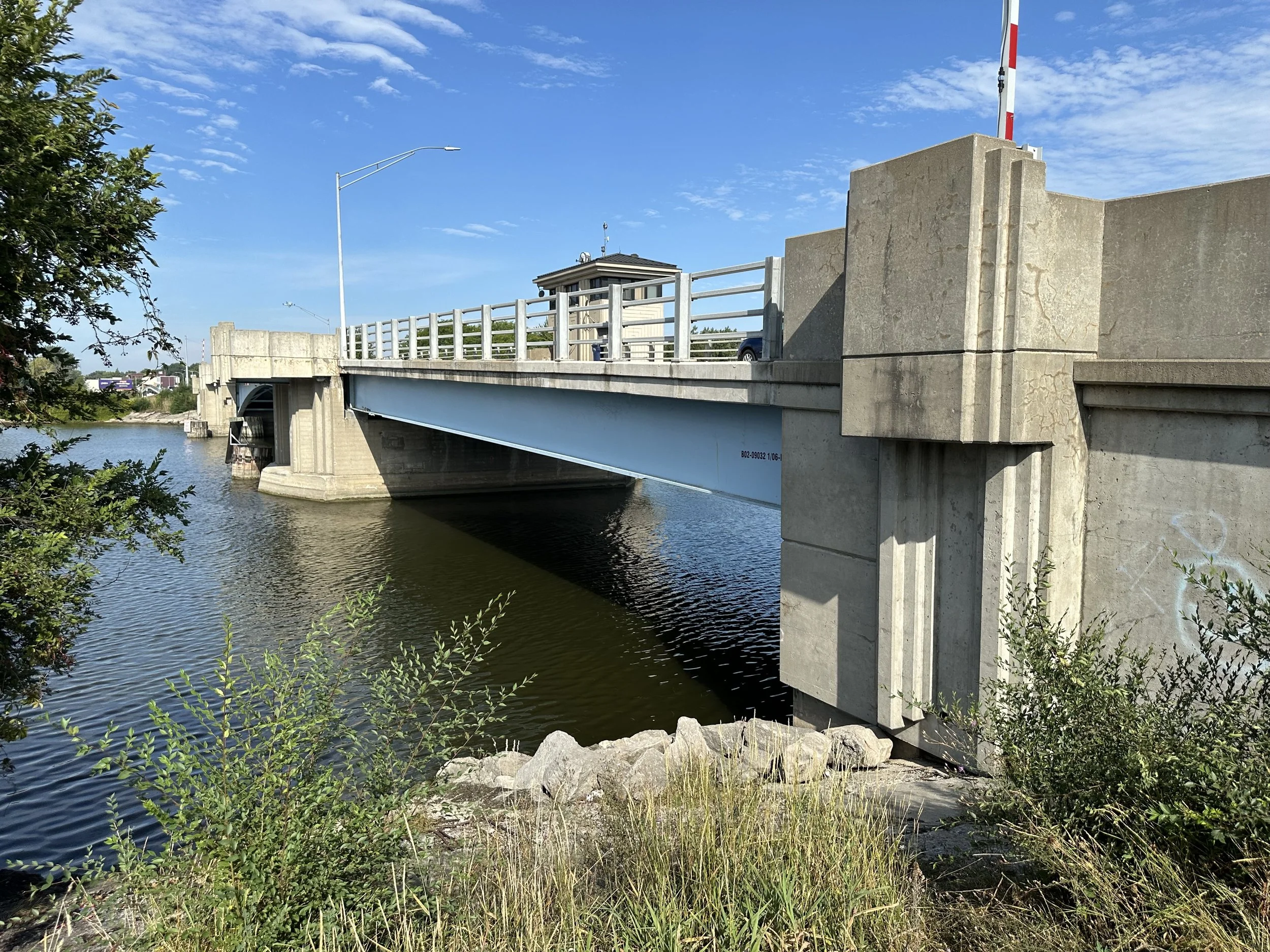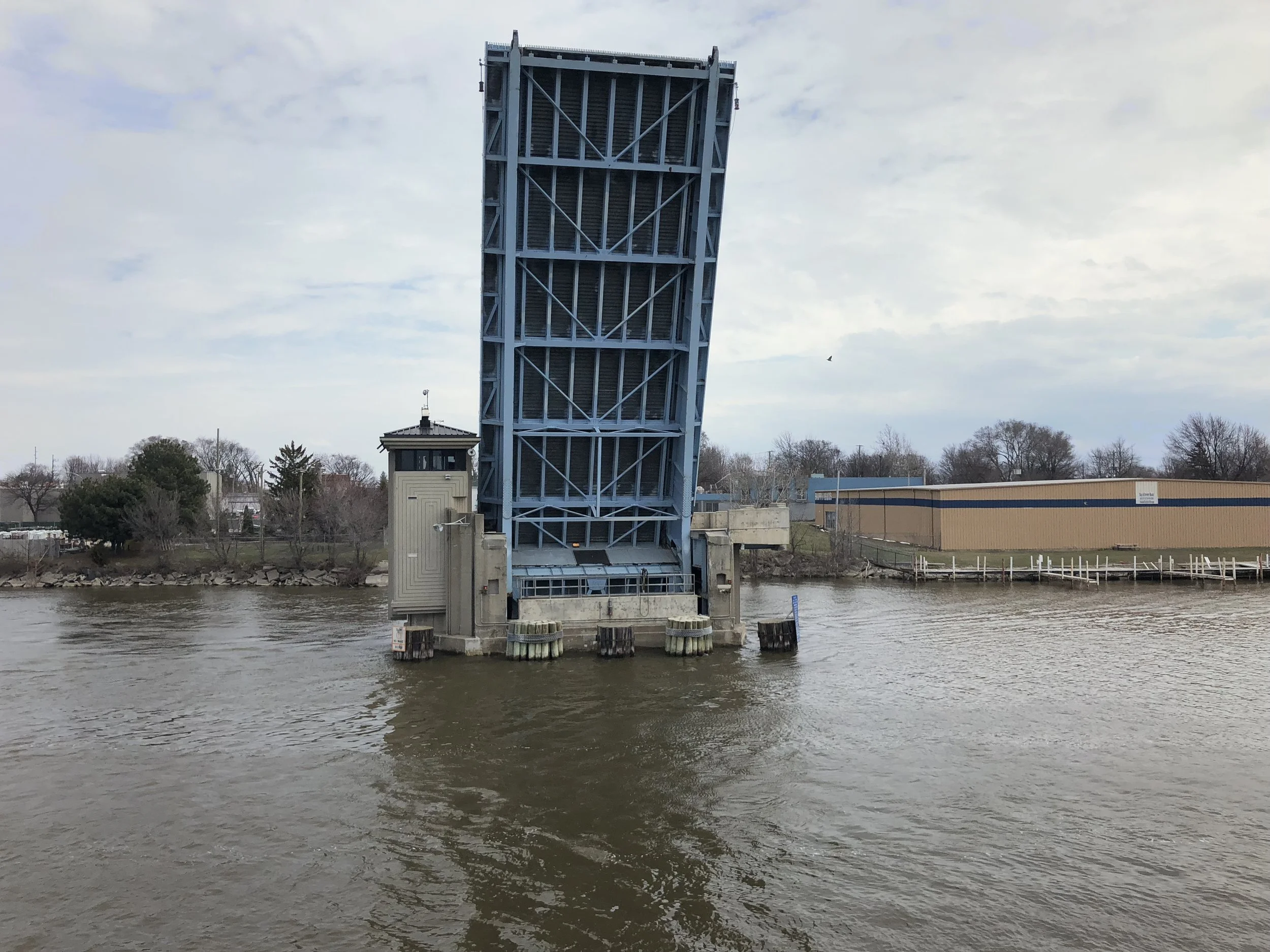Lafayette Bascule Bridge
The Lafayette Bascule Bridge replacement project was located on M-13/M-84 over the East Channel of the Saginaw River in Bay City. The City of Bay City, in partnership with Hardesty & Hanover, led this effort to replace the aging bascule bridge.
Spicer Group was responsible for engineering design, including road and bridge approaches, storm sewer systems, stormwater treatment, bridge signals, pavement markings, permanent signing, municipal utilities, landscape architecture, and cost estimation. The project also required topographic surveys for roadways, structures, hydraulics, and right-of-way, along with coordination with local agencies.
Spicer Group’s construction administration team oversaw the project to ensure compliance with plans and specifications. On-site Construction Services Technicians verified contractor work and materials against approved shop drawings. The Project Manager and Engineer maintained communication between the contractor, city officials, MDOT, and the Coast Guard.
Key project components included:
Bridge Replacement: Removal of the existing bascule bridge and construction of a new three-span steel bascule bridge (44.3-foot deck width, 513-foot total span, 52.85-foot rise). Demolition of existing bascule piers allowed for controlled explosive use under special permit conditions.
Stormwater Management: Installation of a hydrodynamic separator and an 18-inch stormwater outlet to treat runoff before discharging into the Saginaw River.
Structural Improvements: Removal and replacement of fenders, dolphins, pile clusters, and submarine cables.
Erosion Control: Placement of 493 cubic yards of riprap and 46 cubic yards of articulating concrete blocks below the Ordinary High-Water Mark (OHWM), with additional protection above the OHWM.
Excavation & Fill: Conducting 10,860 cubic yards of excavation and placing 9,820 cubic yards of fill below OHWM elevation 581.48 feet (IGLD 85). Additional excavation and fill were completed between OHWM and the 100-year floodplain elevation.
Temporary Work Platforms: Construction of pile-driven trestles and cofferdams for bridge replacement, with specific flood event protocols. A temporary staging work pad with a PVC liner and gravel layer was used to contain existing contaminated soil.
Site Restoration: Upon project completion, temporary work areas were restored with topsoil and seed.

